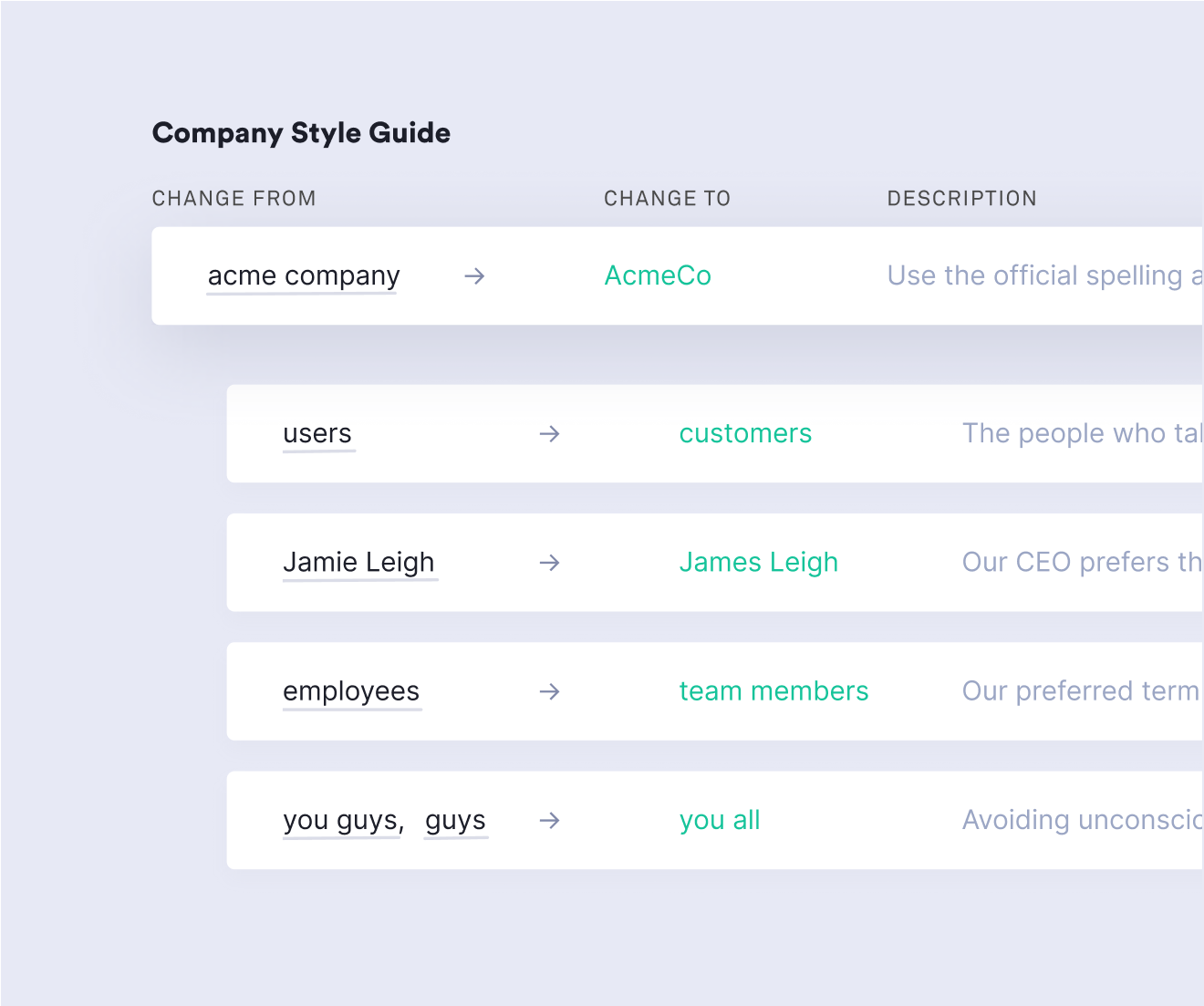Customers often choose brands based on need, but they stay with brands based on trust. Consistent communication is at the core of how brands earn that trust.
But like every leader of a growing marketing organization knows, creating and maintaining that consistency is anything but straightforward. With a growing number of communication channels and technologies to wrangle, time zones to coordinate, and internal documents to reconcile, overseeing brand-building language is a challenge.
To help alleviate some of this complexity, and facilitate more consistent brand stewardship across teams and departments, Grammarly Business now offers style guide suggestions that brand leaders can tailor for their organizations.
Help Your Team Do Their Best Work
Here we share three types of branding to consider when setting up your company style guide:
1 Product and feature names
Your product is one of the most common, and arguably, most important ways your customers will experience your brand. Ensuring that written communications always reflect the correct spelling and capitalization helps customers transition seamlessly from reading product-focused content to working within the user interface. Repetition also builds associations between names and the product experience, helping to differentiate from other similar or competitive offerings.

2 Culture reflective language
Think about intentional choices you’ve made around the language used internally. For example, how do you refer to employees, customers, long-term goals, and current market position? These choices communicate your brand values, and when used consistently, can help bridge your internal culture with external perception. For example, at Grammarly, we refer to employees as team members to connote more than just a contractual relationship—we share a sense of mission, commitment to shared goals, and empathy toward one another. Using this language consistently enables us to reinforce these values.

3 Branded terms
There are certain terms that just always need to be right—period. Misspellings or inconsistencies in the company name, hosted event titles, or executive team members not only look unprofessional but also can quickly erode the customer trust that you’ve worked so hard to earn.
As a leader, you can’t be everywhere to ensure your teams are using brand language appropriately and consistently. However, you can rest easier knowing your team is empowered with Grammarly Business’ real-time writing suggestions to turn every communication into a brand-building interaction.



